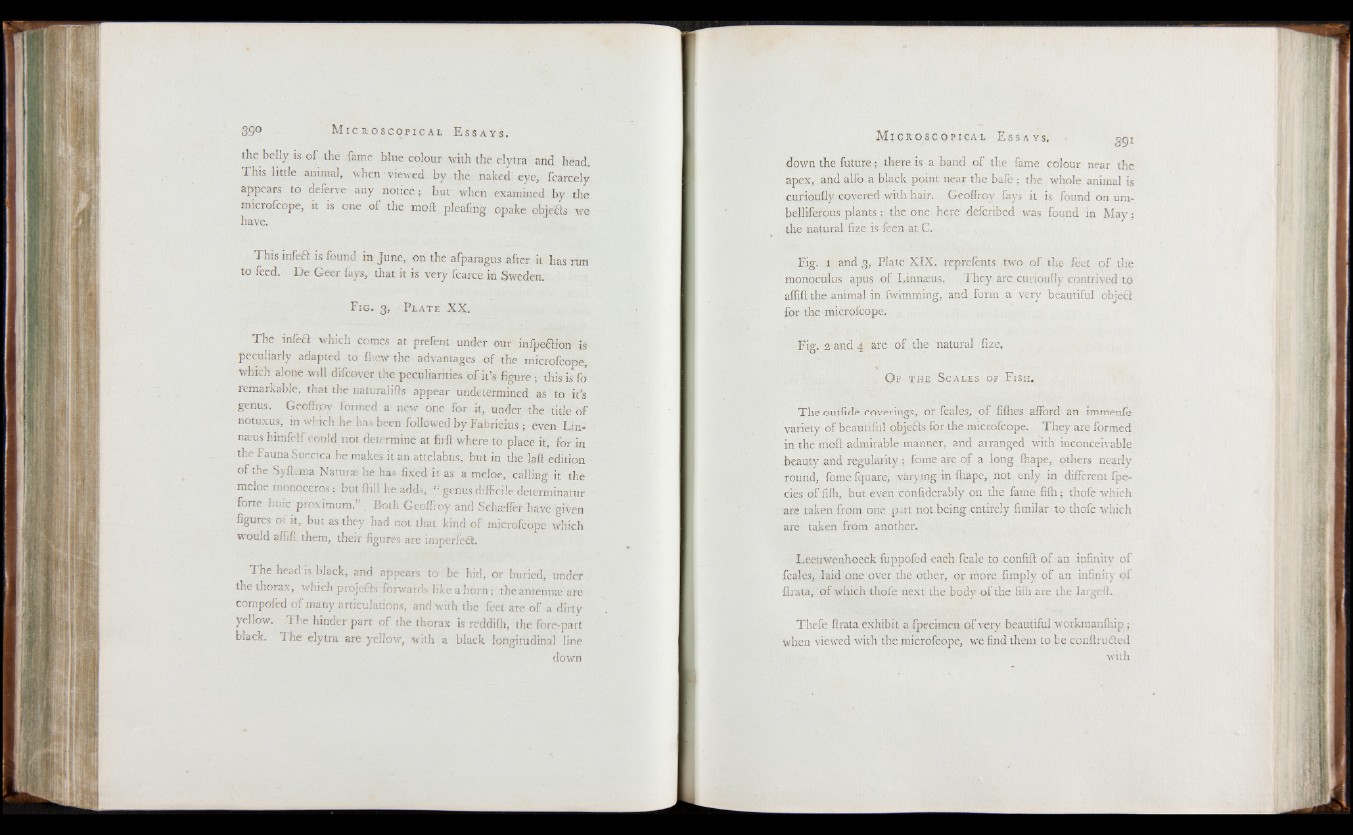
39°
the belly is o f thé fame blue colour with the elytra and head.
This little animal, when viewed by the naked eye, fcarcely
appears to deferve any notice; but when examined by the
microfcope, it is one of the molt pleafing opake objeös we
have.
This infeft is found in June, on the afparagus after it has run
to feed. De Geer fays, that it is very fcarce in Sweden.
Fig. 3, Plate XX.
The mfeét which comes at prefent under our infpeftion is
peculiarly adapted to f!:ew the advantages o f the microfcope,
which alone will difcover the peculiarities o f it’s figure ; this is fo
remarkable, that the naturalifts appear undetermined as to its
genus. Geoffrov formed a new one for it, under the title of
notuxus, in which he has been followed by Fabricius ; even Linnaeus
himfelf could not determine at find where to place it, for in
the Fauna Suecica he makes it an attelabus, but in the laft edition
o f the Syftema Naturae he has fixed it as a meloe, calling it the
meloe monoceros; but (fill he adds, “ genus difficile determmatur
forte huic proximum.” Both Geoffrey and Schaeffer have given
figures 01 it, but as they had not that kind of microfcope which
would aflift them, their figures are imperfed'.
The head is black, and appears to be hid, or buried, under
the thorax, which projects forwards like a horn; the antennae are
compofed of many articulations, and with the feet are o f a dirty
yellow. The hinder part of the thorax is reddilh, the fore-part
black. The elytra are yellow, with a black longitudinal line
down
down the future; there is a band o f the fame colour near the
apex, and alfo a black point near the bafe : the whole animal is
curioufly covered with hair. Geoffrov fays it is found on umbelliferous
plants ; the one here deferibed was found in M a y ;
the natural fize is feen at C.
Fig. 1 and 3, Plate XIX. reprefents two o f the feet o f the
monoculus apus of Linnaeus. They are curioufly contrived to
affift the animal in fwimming, and form a very beautiful object
for the microfcope.
Fig. 2 and 4 are o f the natural fize.
O f the Scales of F ish.
The outfide coverings, or feales, of filhes afford an immenle
variety of beautiful objects for the microfcope. They are formed
in the moll admirable manner, and arranged with inconceivable
beauty and regularity ; fome are of a long lhape, others nearly
round, fome fquare, varying in lhape, not only in different fpe-
cies of filh, but even confiderably on the fame filh; thofe which
are taken from one part not being entirely fimilar to thofe which
are taken from another.
Leeuwenhoeck fuppofed each fcale to confift o f an infinity of
feales, laid one over the other, or more limply of an infinity7 o f
ftrata, of which thofe next the body o f the filh are the large!!.
Thefe ftrata exhibit a fpecimen of very beautiful workmanlhip;
when viewed with the microfcope, we find them to be conftrudted
with